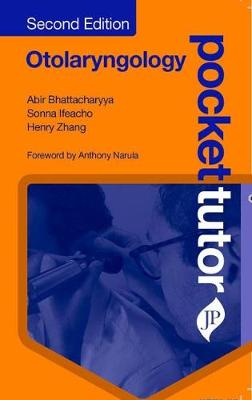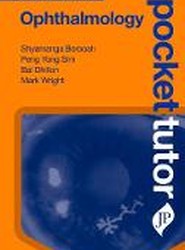(To see other currencies, click on price)
MORE ABOUT THIS BOOK
Main description:
Titles in the Pocket Tutor series give practical guidance on subjects that medical students and foundation doctors need help with "on the go", at a highly affordable price that puts them within reach of those rotating through modular courses or working on attachment.
Highly structured, bite-size content helps novices combat the "fear factor" associated with day to day clinical training, and provides "just enough" for a new rotation.
Key Features
Highly affordable price and convenient pocket size format - fits in back pocket!
Logical, sequential content: the first principles of MSK imaging, then a guide to understanding a normal image and the building blocks of an abnormal image, before describing specific clinical disorders
Clinical disorders are illustrated by high quality radiographs, ultrasounds, CTs and MRIs, with brief accompanying text that clearly identifies the defining features of the image
Focuses on the conditions that medical students, junior doctors and trainees are most likely to see and be tested on
Contents:
Chapter 1 Understanding normal results
1.1 Plain radiographs
1.2 Ultrasound
1.3 Nuclear Medicine
1.4 Computed tomography
1.5 Magnetic-resonance imaging
Chapter 2 Recognising abnormalities
2.1 Bony abnormalities
2.2 Tendon and ligament abnormalities
2.3 Muscular abnormalities
2.4 Superficial soft tissue abnormalities
Chapter 3 Shoulder Girdle
3.1 Key radiological anatomy
3.2 Shoulder dislocation
3.3 Acromioclavicular and clavicle injuries
3.4 Proximal humerus fractures
3.5 Rotator cuff pathology
3.6 Glenoid labral pathology
Chapter 4 Elbow
4.1 Key radiological anatomy
4.2 Elbow fractures
4.3 Distal biceps tendon rupture
4.4 Epicondylitis
Chapter 5 Forearm, wrist and the hand
5.1 Key radiological anatomy
5.2 Distal forearm injuries
5.3 Carpal injuries
5.4 Hand injuries
5.5 Ulnar collateral ligament injuries
5.6 Triangular fibrocartilage complex pathology
5.7 De Quervain's tenosynovitis
Chapter 6 Pelvic girdle and the hip
6.1 Key radiological anatomy
6.2 Avulsion injuries of the pelvis
6.3 Pelvic fractures
6.4 Neck of femur fracture
6.5 Developmental dysplasia of the hip
6.6 Acetabular labral pathology
6.7 Slipped upper femoral epiphysis
6.8 Perthes' disease
6.9 Avascular necrosis of femoral head
Chapter 7 Knee and Tibia/Fibula
7.1 Key Anatomy
7.2 Knee and tibial injuries
7.3 Meniscal pathology
7.4 ACL injuries
7.5 MCL injuries
7.6 QT injuries
7.7 Osgoof Schlatter's disease
7.8 Baker's cyst
7.9 Intra-articular loose bodies
Chapter 8 Ankle and Foot
8.1 Key radiological anatomy
8.2 Ankle injuries
8.3 Foot injuries
8.4 Achilles tendon pathology
8.5 Torsal coalition
8.6 Tibialis Posterior dysfunction
8.7 Morton's neuroma
Chapter 9 Spine
9.1 Key radiological anatomy
9.2 Atlantoaxial fractures
9.3 Vertebral fracture
9.4 Facet injuries
9.5 Sacral fractures
9.6 Scoliosis
9.7 Spondylolisthesis
9.8 Disc Herniation
9.9 Spondylodiscitis
9.10 Cord compression and cauda equina syndrome
Chapter 10 Systemic diseases
10.1 Bony tumours
10.2 Paget's disease
10.3 Arthritides
10.4 Osteomyelitis
10.5 Osteochondritis dissecans
PRODUCT DETAILS
Publisher: Jaypee Medical (JP Medical Ltd)
Publication date: May, 2014
Pages: 220
Weight: 652g
Availability: Available
Subcategories: Orthopaedics and Fractures, Radiology
From the same series


























